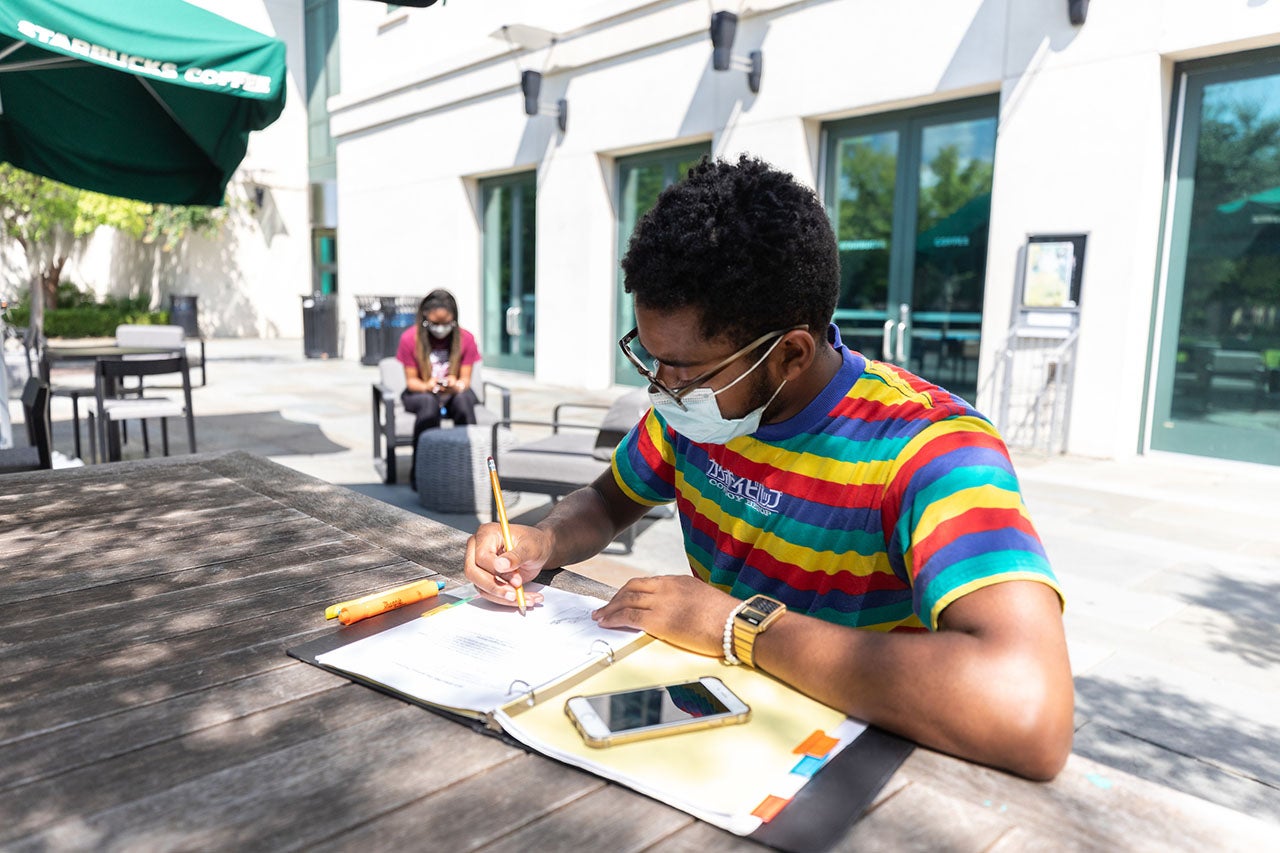What started out as a haphazard shift to virtual instruction amid the coronavirus pandemic has become a doorway to new paths for professors at the College to better connect with students long after we’ve moved beyond COVID.
And four faculty in the Department of Health and Human Performance took a deeper dive into what the future of their classes might look like at TLTCon 2021, the College’s annual Teaching, Learning, and Technology Conference in May. Through a series of presentations dubbed the “Silver Linings Pandemic Playbook,” Kate Pfile, Morgan Hughey, Becky Kyryliuk and Megan Irwin each highlighted what they’ve learned from teaching in these unprecedented times. The quartet credited their success to the support they received through the Teaching and Learning Team (TLT), which helps faculty integrate technology into teaching.
One of the biggest takeaways for Pfile, director of the Exercise Science Program, was the benefits of small group instruction, which she says helps build stronger connections among students and with their professors. For example, in her fall 2020 course Neuromuscular Assessment and Exercise Prescription, Pfile – who had to adjust to reduced classroom capacity due to social distancing – found that meeting with smaller groups of students in person once a week for discussion and hands-on activities, while also assigning online lectures and assignments, made for a more effective learning environment.
Kyryliuk, an instructor of exercise science, had a similar experience in her fall 2020 course Chronic and Communicable Diseases, where she also met in person with small groups of students once a week.
“In a class of 30, you tend to hear from the same 5 to 10 students, and it’s easier for a student who is less likely to engage to comfortably sit quietly,” she says. “But in a smaller class, it’s very obvious if they’re not engaging.”
Kyryliuk also began using the Poll Everywhere app to encourage feedback from students in real time. “Polls are another great option as a stress-free, low-pressure way for students to participate if they’re not comfortable speaking up,” she says.
In place of the traditional class presentations, Irwin, a visiting assistant professor of exercise science, has had students in various classes use the video platform Flipgrid to put what they’re learning in class into action.
In Irwin’s fall 2020 Techniques and Strategies of Coaching class, for example, students created coaching demonstrations on Flipgrid to show how they would teach sports skills like batting or shooting a foul shot.
“Flipgrid assignments are a great way for students to learn how to organize their thoughts into an effective presentation,” she says.
And Hughey, assistant professor of public health, found better ways to make sure students are hearing their professors, too. With the loss of the natural face-to-face interactions of in-person classes, she began using audio comments to give feedback on semester-long group projects in her Health Promotion course.
“I would put in some written comments and then also do a minute or so of audio comments explaining why I was giving this feedback – what was going well and what needed to be better,” she says, noting she was surprised by how much students used the comments to improve their work. “I got the best projects that I’ve ever received in my three years of teaching the class.”
Indeed, these faculty members say the silver lining in all of the challenges of the past year is that it has led to a renewed focus on how college courses are taught, which in turn has made them better teachers.
“The pandemic shifted conversations more cohesively in terms of classroom instruction and how to teach your subject rather than just focusing on academic research,” says Irwin. “And I think that’s been great.”




